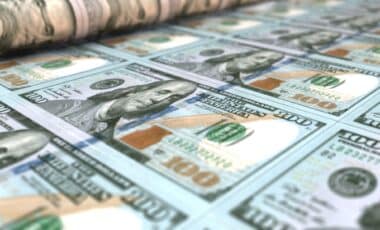U.S. retail sales rose more than expected in March, reflecting a notable increase in consumer activity driven by concerns over upcoming price adjustments linked to trade policy shifts.
The latest data suggests that many households brought forward their purchases in anticipation of tariffs introduced by the Trump administration.
According to Newsweek, the sales surge is likely tied to front-loaded spending behavior, influenced by announcements of new import duties affecting a wide range of goods. U.S. retail performance is often viewed as a barometer of economic resilience, and March’s figures may indicate both short-term confidence and underlying caution across key sectors.
Strong Growth in March Suggests Preemptive Purchases
Retail sales rose by 1.4 percent in March, according to data from the U.S. Census Bureau, exceeding analyst forecasts of 1.3 percent and up from 0.2 percent in February. This marks the strongest monthly growth since January 2023, when retail sales surged 4.1 percent.
Core retail sales—excluding automobiles and gasoline—increased by 0.8 percent, matching February’s revised growth. Leading the gains were :
- Motor vehicles and parts : +5.3 percent
- Building materials & garden equipment : +3.3 percent
- Sporting goods, hobby, musical instruments & books : +2.4 percent
- Food services & drinking places : +1.8 percent
A separate report from the National Retail Federation (NRF) reported a 0.6 percent increase in March retail sales, with core sales—excluding autos, gas, and restaurants—rising by 0.4 percent. Within that breakdown :
- Food services & drinking places : +1.5 percent
- Digital products : +0.8 percent
- Clothing & accessories : +0.8 percent
Policy Announcements Create Consumer Urgency
The spending surge preceded the Trump administration’s “Liberation Day” announcement on April 2, introducing a 10 percent baseline tariff on all imports and a series of “reciprocal” tariffs affecting dozens of trade partners.
A 90-day pause was granted for most countries on April 9, although China was excluded and now, according to the White House, “faces up to a 245 percent tariff on imports” following Beijing’s retaliatory actions.
These measures followed earlier February tariffs on China, Canada, and Mexico, prompting speculation that the March increase in retail spending reflects consumers seeking to buy goods before price increases take effect.
Economists Highlight Risk of Short-Lived Momentum
Some economists believe the jump in sales may not represent lasting momentum. Chris Zaccarelli, chief investment officer at Northlight Asset Management, noted :
This morning’s retail sales came in better than expected, and while normally that would be a good thing for markets, it is very possible that consumers are front-loading their purchases and we may be seeing an artificial bump in sales, which the market will likely look through.
He added :
The uncertainty over tariff policy may be causing even more damage than any policies which are eventually implemented. It’s true that the current tariff levels on China are unsustainable and will have the effect of completely ending our trading relationship with them if they are left as they are. However, for the rest of the world we have hope that overall tariffs will end up below 10 percent.
Implications for Fed Policy and Consumer Sentiment
Federal Reserve officials have acknowledged that strong short-term consumer data may complicate economic assessments. James Knightley, chief economist at ING, told CNN :
In the near term, we could have some really strong consumer spending numbers, but that just makes things a little bit tricky for the Fed… That means that the Fed just sits and waits to see what happens.
Meanwhile, consumer sentiment appears to be shifting. Matthew Shay, president and CEO of the National Retail Federation, commented :
With the economic outlook unclear and the situation fluid, consumer sentiment is weakening, and many consumers are shifting disposable income into savings.









